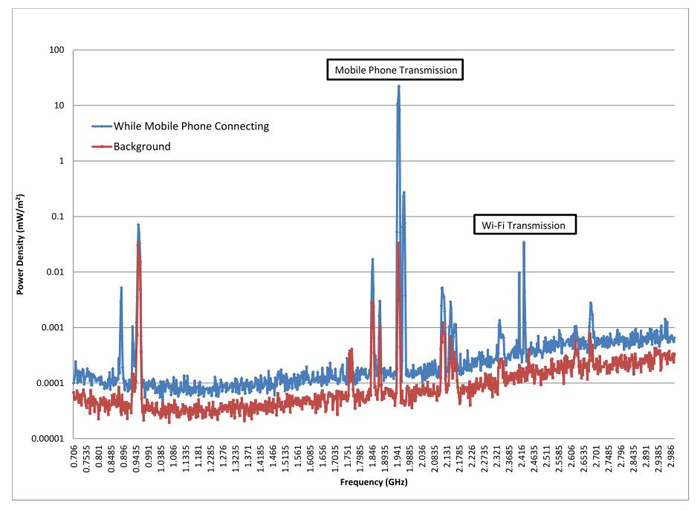|
A working group under the International Agency for Research on Cancer (IARC), a special agency of the World Health Organization (WHO), announced in 2011 that it classifies Radiofrequency Electromagnetic Fields (RF-EMF) as "possibly carcinogenic to humans" (Group 2B) under the IARC Monographs on the Evaluation of Carcinogenic Risks to Humans in which, coffee, gasoline-engine exhaust and welding fumes are also classified under the same group. The conclusion came after thorough review of data covering decades of studies, many of them focused on mobile phone users. The Working Group concluded that there is limited evidence in humans and in experiment animals for the carcinogenicity of RF-EMF, though majority of the group supports classification of RF-EMF under Group 2B. The decision not only provides fresh impetus to flare up the forgotten debate about the carcinogenicity of RF-EMF but also further divides the already irreconcilable difference between those who fear the potential adverse health effects caused by RF-EMF exposure and those who desire extensive RF-EMF coverage to enrich their daily routine.
Radiofrequency Electromagnetic Fields (RF-EMF) is a type of electromagnetic radiations that falls under a broader classification known as Nonionizing Radiation (NIR). Ordinary light, infra- red (IR) and ultra violet (UV) are all better known members of the NIR family. These RF-EMFs do not have sufficient energy for ionization, i.e. Nonionizing Radiation (NIR). They interact with body tissues by different mechanisms from those for ionizing radiation such as radioactive substances and X-rays. The main biological effect of RF-EMF is thermal and it is currently accepted that repeated exposure to EMF up to the International Commission on Nonionizing Radiation Protection (ICNIRP) guideline levels should not produce any adverse health effects.
Early applications of RF-EMF were found in medicine, telecommunication and a few other industries. Together with the technological advances in recent decades, the ever increasing application of RF-EMF in wireless telecommunication industry propels the needs to erect more new antennae base stations on rooftop. Reducing public exposure to RF-EMF has suddenly become a social issue.
Antenna base stations work by transmitting and receiving RF-EMF. Only transmitting antenna emits RF-EMF, whereas the receiving antenna serves as a receiver which does not emit RF-EMF. Each antenna base station is designed to provide coverage for a specific area. The number of base stations increases with increasing size of the area covered. However, the power of the antennae may stay the same or even be adjusted to a lower power output to avoid interference with other antennae in the vicinity. In Hong Kong, base station installation is regulated by the Office of the Communication Authority (OFCA) which adopts the exposure guidelines established by the ICNIRP as the basis of the existing code of practice. All installation must fulfill the requirement established in the code of practice.
At HKUST, the base stations locate on the rooftops of the campus buildings are closely monitored by FMO and HSEO. HSEO regularly performs assessment of the RF-EMF emission of the base stations. Assessment of public exposure to the RF-EMF involves screening for hot spot in the area concerned and performing a 6-minute assessment of the RF-EMF at a selected location. University personnel and residents' exposure to RF-EMF is often found to be extremely low and well within compliance. Residents' exposure to RF-EMF is generally around 0.004% of the reference limit (figure 1).

Figure 1. Typical resident’s exposure to NIR is about 0.004% of the limit
Relatively higher exposure is recorded when a transmitter such as a mobile phone or wireless router located in the survey area is operating (figure 2).The results concur with the finding from the IARC Working Group that the highest exposure received by the general population is from the transmitters close to the body. Typical RF-EMF exposure to the brain from rooftop base stations is several orders of magnitude lower. This is a clear indication of where the priority lies. While residents may attempt to go hunting for the perceived witch residing on the rooftop, the Pandora's Box is in fact resting peacefully in each household and regularly illuminating its deceptive charm.

Figure 2. Resident receives higher exposure when transmitter such as mobile phone or wireless router is connecting.
The conclusion drawn by the Working Group is very much anything but affirmation and it offers very little hope of settling the issue. Unless you do not know drinking coffee or inhaling gasoline-engine exhaust may possibly cause cancer, the announcement is neither a revelation for those who are presumably in the dark nor an assurance to the fearful ones that RF-EMF is not a confirmed carcinogen. As long as there is the slightest sign showing a positive correlation between RF-EMF and carcinogenicity, the debate will go on.
|